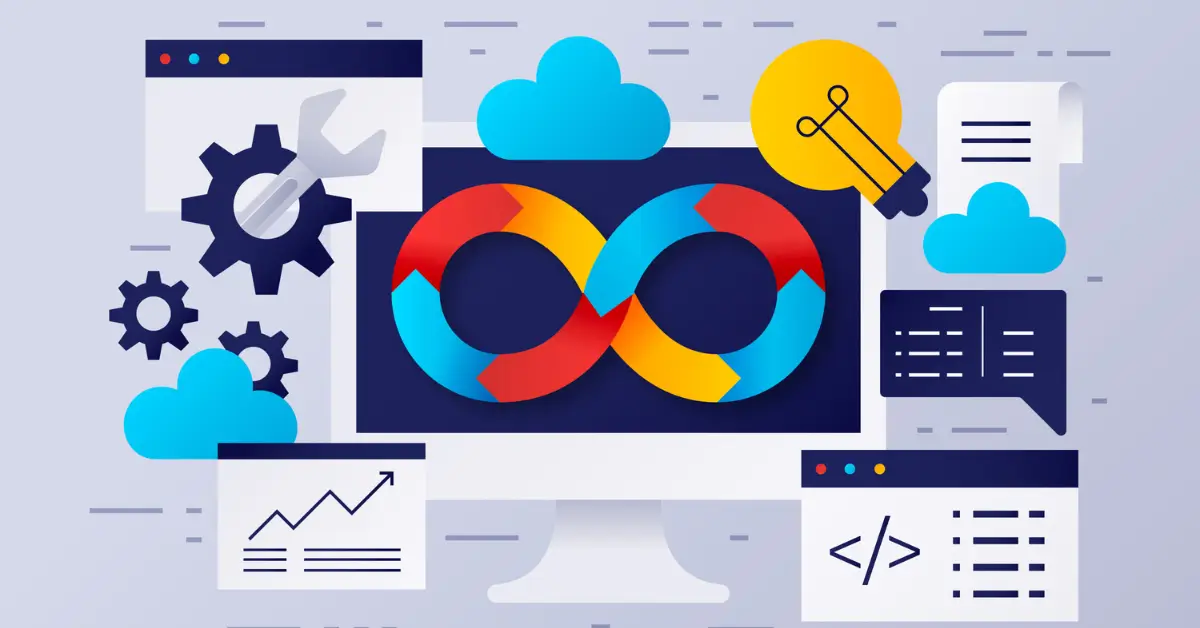The Pulse of Progress
As we navigate mid-2025, the digital landscape isn’t just evolving—it’s undergoing a metamorphosis. The websites we build today aren’t static brochures but living ecosystems where AI anticipates user needs, interfaces respond to voice commands, and security operates on “never trust, always verify” principles. This seismic shift isn’t about chasing shiny objects; it’s about meeting users where they are: on mobile devices generating 62.54% of global traffic, demanding instant-loading experiences, and expecting interactions to feel like conversations rather than transactions.
1. AI: From Coding Partner to UX Architect
The Revolution: AI has moved beyond chatbots to become the central nervous system of web development. Tools like GitHub Copilot now handle >40% of boilerplate code generation, while AI-powered design systems like Figma’s new AI Canvas interpret wireframes into production-ready components 34.
Real-World Impact:

Example: Spotify’s AI engine now restructures playlist interfaces based on listening habits—night owls see darker themes with “focus mode” features, while commuters get podcast highlights 7.
Your 2025 Playbook:
- Implement predictive UX tools like Microsoft Copilot for real-time interface optimization
- Use AI-powered A/B testing (Optimizely AI) to automate layout decisions
- Adopt ethical AI audits to prevent algorithmic bias in personalization 4
2. PWAs: The App Store’s Disruption
Why It’s Essential: Progressive Web Apps now deliver near-native performance with 90% smaller footprints than native apps. Tinder’s PWA demonstrates the potential: 4.69-second load times (vs. 11.91s previously) and 60% fewer security vulnerabilities than native alternatives 79.
2025 Advancements:
| Feature | Business Impact |
|---|---|
| Background Sync | Offline form submissions |
| Device HW Access | AR camera integrations |
| Push Notifications | 180% retention boosts |
Pro Tip: Use Workbox for caching strategies that enable instant loading even on 3G networks 7.
3. Headless CMS: Content Freedom Fighting
The Shift: Traditional CMS platforms are crumbling under omnichannel demands. Enter headless architectures like Strapi 5 and WordPress headless—separating content backends from presentation layers via APIs 7.
Key Benefits:
- Multi-Channel Publishing: Push content to IoT devices, digital kiosks, and VR environments from one dashboard
- Performance Gains: 300ms faster TTI (Time to Interactive) by decoupling frontend/backend
- Security: 60% fewer XSS attacks due to API isolation 79
Case Study: AE Studio built a nonprofit marketplace using Strapi + Next.js, handling 500K monthly users with 99.99% uptime 7.
4. Voice-First Interfaces: Beyond Screen Tapping
The Stats Don’t Lie: With 75% of US households owning smart speakers and >50% of searches being voice-driven, VUIs (Voice User Interfaces) are mandatory 59.
Implementation Essentials:
- Natural Language Processing: Optimize for conversational queries (“Find vegan tacos under $10 near me”)
- Audio Feedback Design: Create sonic branding for voice interactions
- Privacy Shields: Implement automatic voice data deletion (GDPR-compliant)
Innovation Spotlight: Shopify’s VoiceOrder API lets users reorder products via Alexa using purchase history 5.
5. WebAssembly: Browser-Based Beast Mode
The Performance Leap: Wasm enables near-native execution speeds in browsers. Developers now port C++, Rust, and Go codebases to web apps for:
- Browser-based video editing (Adobe Premiere Web)
- CAD modeling in Figma
- 3D game engines running at 60fps 4
Developer Advantage:
javascript
// Sample Wasm video processing flow
WebAssembly.instantiateStreaming(fetch('videoencoder.wasm'))
.then(module => {
module.exports.process4KVideo(rawFootage); // 5x faster than JS
});6. Zero Trust Architecture: The New Security Mandate
Why Traditional Security Fails: 73% of breaches start with compromised credentials 9. ZTA operates on strict “verify every request” policies.
Implementation Framework:
- Microsegmentation: Isolate app components (e.g., checkout vs. product browsing)
- Continuous Auth: Re-authenticate users after high-risk actions
- Encrypted Pipelines: Enforce TLS 1.3 + quantum-resistant crypto
Toolkit: Cloudflare Access, Google BeyondCorp, and OpenZiti for open-source zero-trust networks 79.
7. Motion Design: The Silent UX Guide
Beyond Decoration: Micro-animations now serve critical UX functions:
- Contextual Feedback: Form fields pulse red for errors
- Behavioral Guidance: Animated arrows direct first-time users
- Emotional Connection: Product icons “celebrate” when added to cart 210
Performance-Conscious Techniques:
- CSS
@scroll-timelinefor scroll-linked animations - SVG path animations under 2KB
- WebGL optimizations for 60fps 3D interactions 6
8. Edge Computing: The Speed Revolution
By the Numbers:
- 75% of enterprise data will process at the edge by 2026
- Latency reduced from 200ms to <10ms
- Bandwidth costs slashed by 40%+ 59
Use Cases Exploding in 2025:
- Real-time inventory updates in retail PWAs
- IoT sensor processing for smart factories
- Live sports betting interfaces
Start Here: Cloudflare Workers, AWS Lambda@Edge, Netlify Edge Functions.
9. Sustainable Web Craft: Green Is the New Black
The Carbon Math: An average website produces 1.76g CO2 per page view. With eco-consciousness rising:
- 92% of users prefer eco-friendly brands
- 81% choose sustainable sites over competitors 6
Green Dev Practices:
- Dark Mode Defaults: Saves 39% energy on OLED screens
- Asset Optimization: AVIF images + Brotli compression
- Green Hosting: Providers like Google Cloud use 100% renewable energy
Performance Bonus: Eco sites load 70% faster due to leaner code 2.
10. Web3 Bridges: Practical Decentralization
Beyond Crypto Hype: Practical implementations gaining traction:
- Decentralized Auth: Microsoft Azure AD Verifiable Credentials
- NFT Memberships: Token-gated content for communities
- Smart Contract Integration: Automated royalty payments 45
Tooling Up:
- MetaMask SDK for wallet integration
- IPFS for decentralized storage
- ActivityPub for social media federation 7
The Human Impact: Why These Trends Matter
Behind every trend lies a human story:
- Maria, a bakery owner, uses voice commands to update her PWA menu while kneading dough
- Jin, a visually impaired user, navigates AI-optimized sites 3x faster
- Eco-conscious startups cut digital carbon footprints while ranking higher on Google
This isn’t about tech for tech’s sake—it’s about building digital spaces that respect users’ time, privacy, and planet.
Your 2025 Adoption Roadmap
- Audit: Run Lighthouse 12 + WebPageTest for sustainability/scoring
- Prioritize: Implement PWAs + headless CMS for maximum ROI
- Secure: Deploy zero-trust policies for customer data
- Optimize: Migrate compute to edge networks
- Experiment: Add one AI feature (e.g., predictive search) quarterly
“The best developers in 2025 aren’t just coders—they’re digital anthropologists who understand how humans want to interact with technology.” — Lena K., Fintech CTO 7
Web development in 2025 demands a paradigm shift from building websites to crafting adaptive experiences. Those who embrace these trends won’t just survive—they’ll define the next decade of digital interaction.





